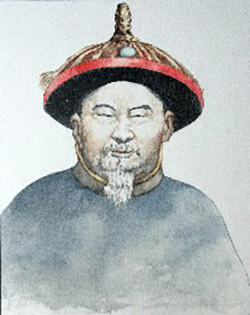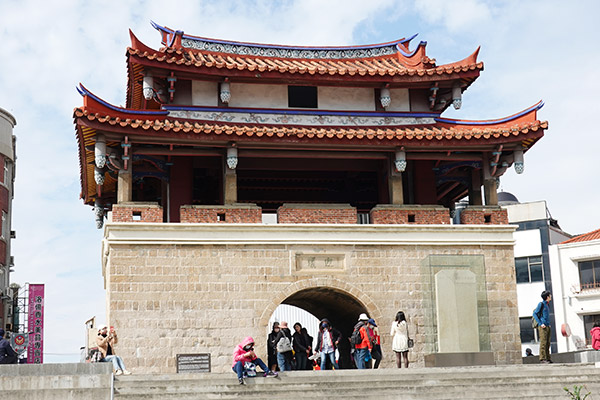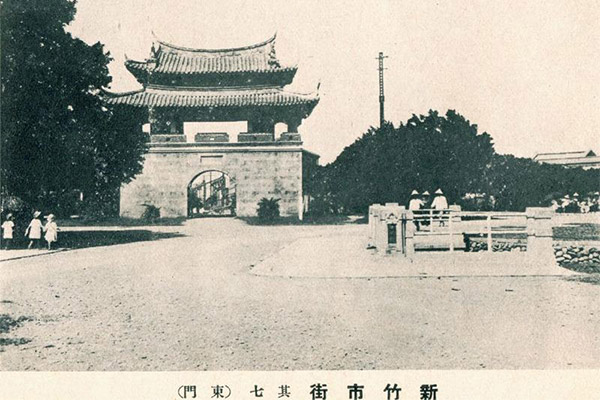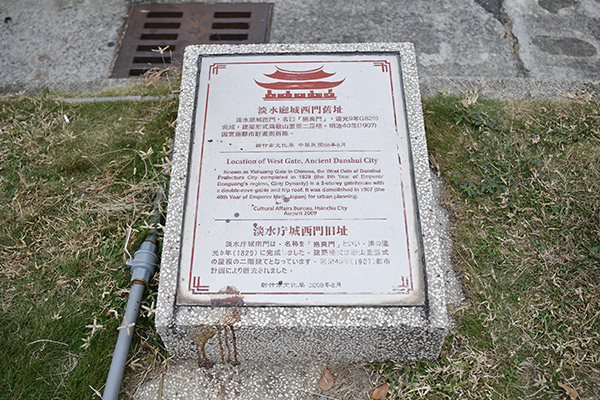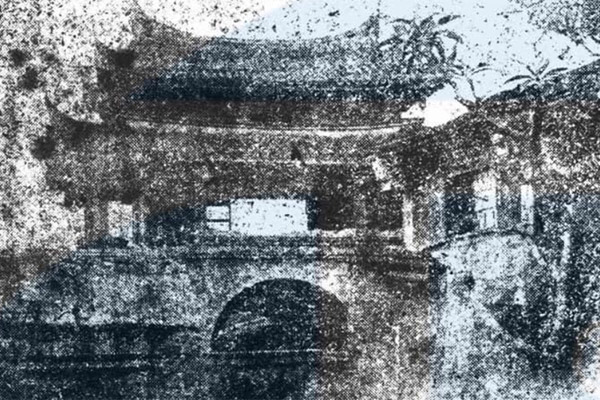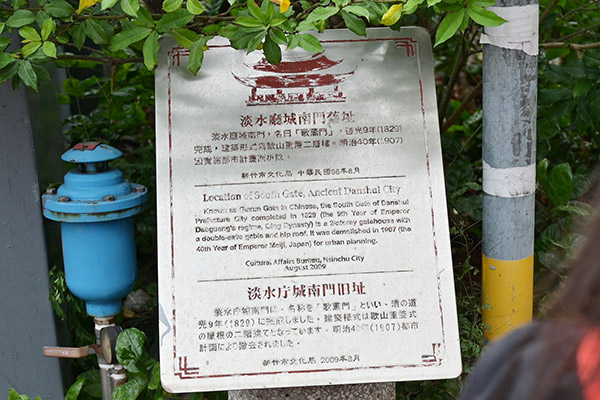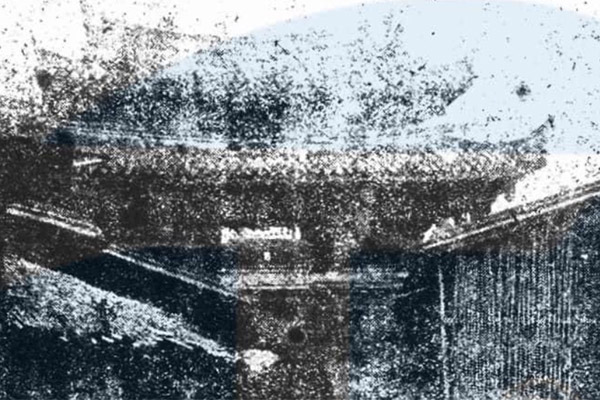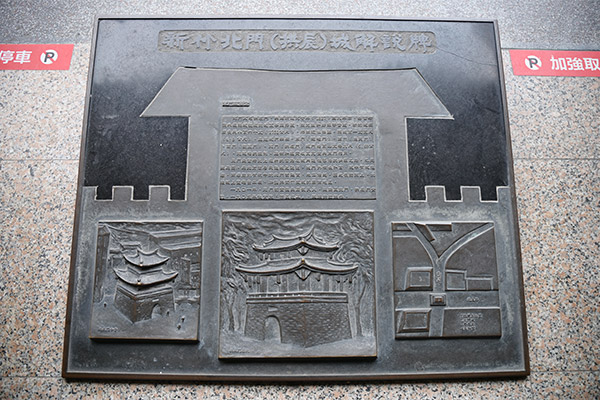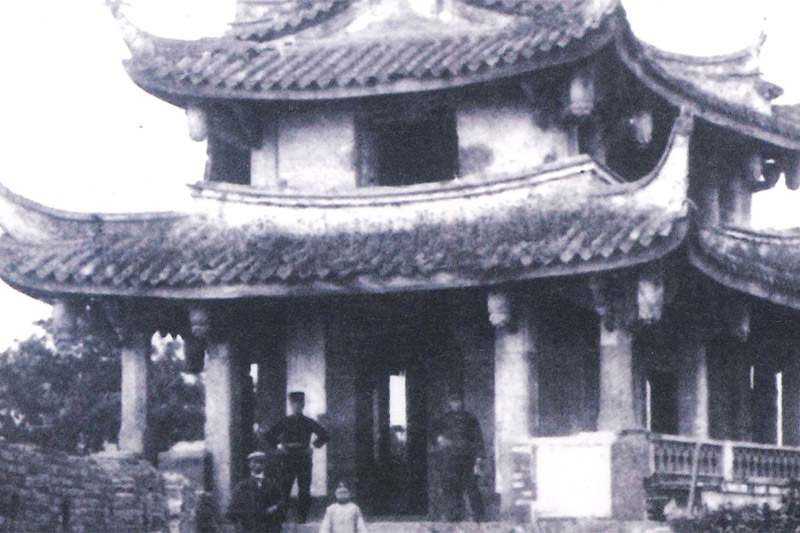photo by here
▪History
The ancient name of Hsinchu is Zhuqian, which dates back to the 6th year of Daoguang reign of the Qing Dynasty (1826 AD). Zheng Yongxi and others petitioned to rebuild Zhuqian City Castle with masonry walls and build four city gates, which included East gate - Yingxi Gate, West gate - Yishang Gate, South gate - Gexun Gate, and North gate - Gongchen Gate
In 1901, a fire on Beimen Street destroyed The North Gate. In 1920, due to urban road organization, The West gate, The South gate and other city walls were demolished. Only The East Gate, Yingxi Gate, is left for people to pay homage to.
In the Qing Dynasty, Zhuqian City Castle had four city gates, with the Chenghuang Temple as the center. Yingxi Gate, Yashuang Gate, Gexun Gate, Gongchen Gate. Currently, only The East gate is remained while explanatory plaques have been erected to commemorate the former sites of the North, South and West gate.
"Yingxi" means to welcome the morning sun, referring to the east side where you can see the sunrise. "Yishang" means Yan (invitation), Yi (guidance), refreshing air (autumn air), the west wind blowing in autumn. "Gexun" refers to Xun wind which blows in summer, that is, the south wind "Gong" in "Gongchen" means guard, and "Chen" is the ancient name of the North Star, which can refer to the place where the emperor lives and also the direction of North.
▪The east gate(Yingxi Gate)
In the 35th year of the Meiji era (1902 AD), the Taiwan Governor-General's Office demolished the city wall gates of the Zhuqian’s gates and only retained The East Gate, Yingxi. Yingxi Gate is a colonnade-style tower with a west-facing seat facing east and south. It is made of granite strips laid out layer by layer. There is a plaque with the name "Ying Xi'' above the main entrance. The roof of Yingxi Gate is built with double eaves and warped ridges. The large wooden structure under the roof was built with reinforced concrete during renovation. Behind the city gate is the "Inscription of the New Tamsui City of Taiwan Prefecture '' written in 1829, which is one of the testimonies of the construction of the city with bamboo trenches. In the 85th year of the Republic of China (1996 AD), the Executive Yuan Committee approved the renovation plan of Hsinchu East Gate City Plaza, and designed the East Gate City with a new concept, named it "Heart of Hsinchu ''. In the 88th year of the Republic of China (1999 AD), the plaza was presented along with the Zhu Qian City celebration. With the addition of poetry walls, projection sculptures, glass bridges, river art galleries and moat waterfront parks, marking the historic site with a mark of the times that combines tradition and modernity.
▪the west gate(Yishang Gate)
The south gate of Tamsui Hall City, named "Yishang Gate", was completed in the 9th year of Daoguang's reign (in 1829). The architectural form is a two-story building with double eaves. It was demolished in 1907 due to the implementation of urban planning.
▪the south gate(Gexun Gate)
The south gate of Tamsui Hall City, named "Gexun Gate", was completed in the 9th year of Daoguang's reign (1829). The architectural form is a two-story building with double eaves. It was demolished in the 40th year of Meiji (1907) due to the implementation of urban planning.
▪the north gate(Gongchen Gate)
The North Gate, also known as Gongchen Gate, was built between the seventh and ninth years of Daoguang (1827), under the supervision of Luo Xiuli, Chen Guangyi, Zheng Chen and others from Beicheng of Tamsui City Construction Factory at that time. The stone city wall of Bamboo Cutting City has a circumference of 860 feet (2752 meters), an approximate oval shape, and a height of 15 feet (4.8 meters). It also has four city gates, Yingxi Gate, Yishuang Gate, Gexun Gate and Gongchen Gate, the gate tower is 2 feet and 9 inches (6.69 meters) high. The planning, building materials and funding expenditure of the North Gate Tower are completely the same as those of the other three gates.
The North Gate was the official road going north to Menga and the only way from the city to the old port. It was also the passage for residents from the west and north sides of the city to enter the city. There is Changhe Palace outside the city gate, and there is the Chenghuang Temple in the city. The two temples are connected by the current Beimen Street, which has a superior position. Therefore, in terms of defense, two forts were built on the North Gate City to strengthen the defense of the commercial area of Zhu Qian City.
In 1900, a fire broke out on Beimen Street and spread to the North Gate, completely destroying the Gongchen Gate. From 1903 to 1906, due to the deterioration of the city wall and the implementation of "urban reform plans", the city wall was demolished and nothing remained.
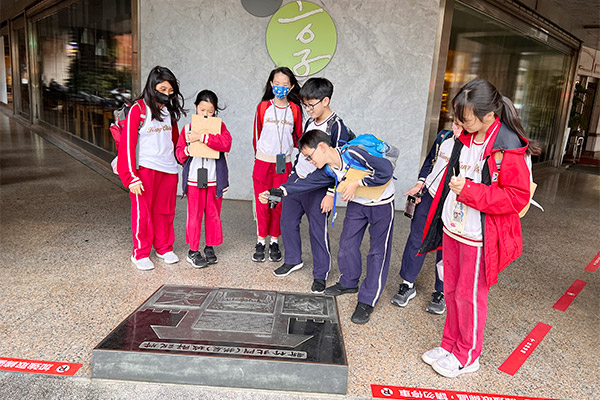
photo by our team
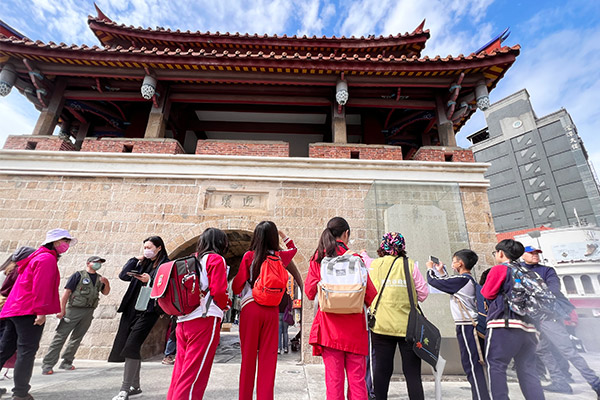
photo by our team
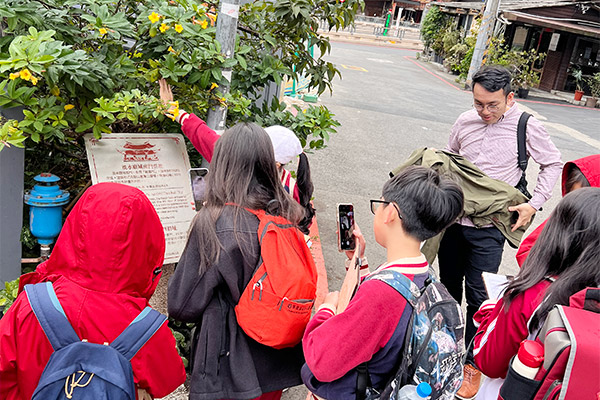
photo by our team
video by here
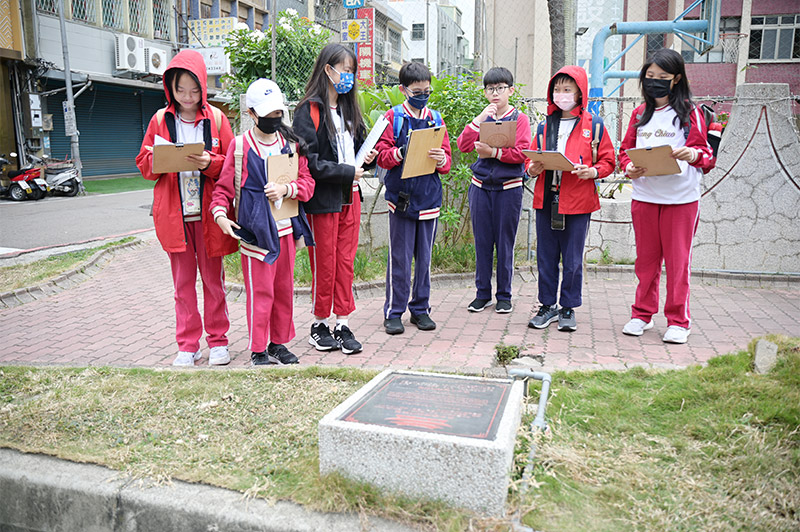
photo by our team
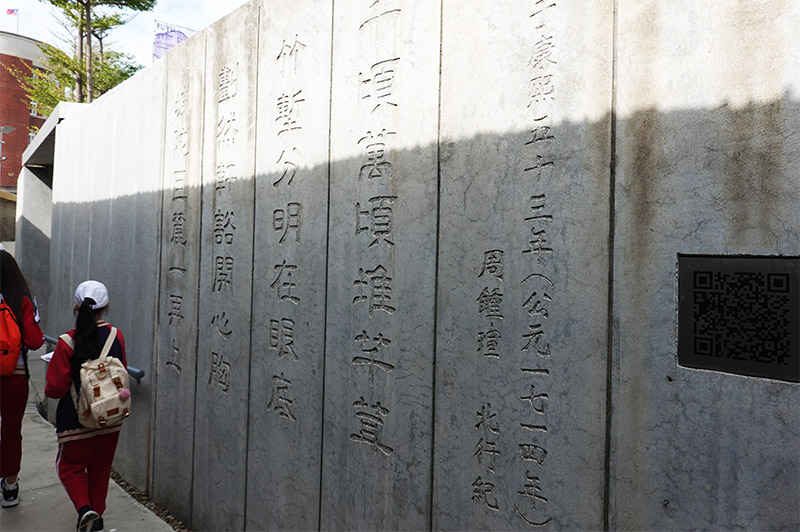
photo by our team
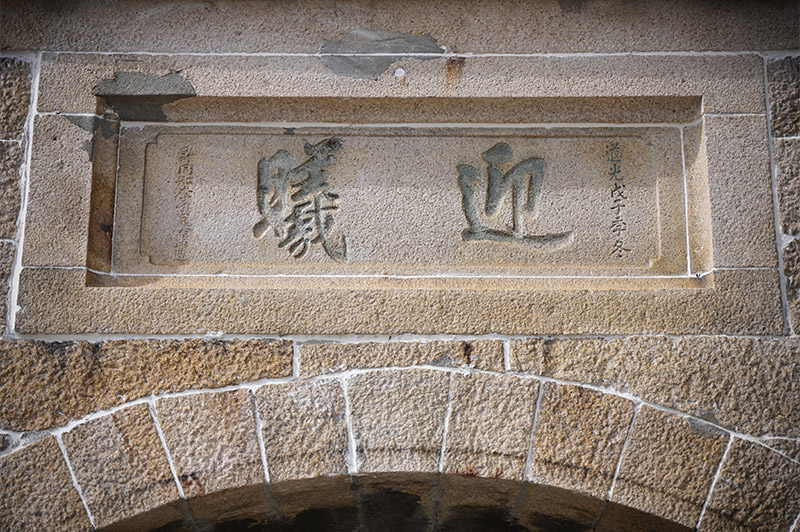
photo by our team

